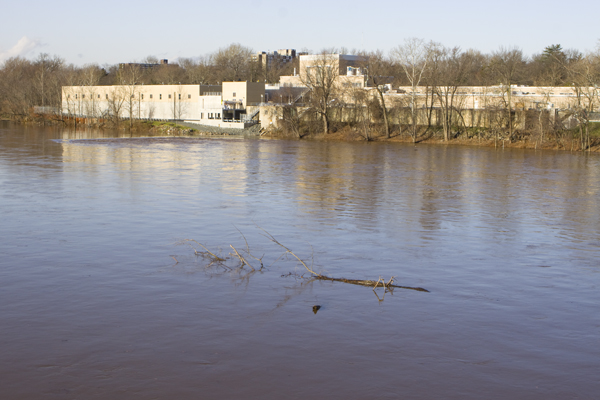NJ Drinking Water Infrastructure Deficit Exceeds $7.9 billion

Trenton water filtration plant on Delaware River
Given yesterday’s long delayed DEP statewide drought watch, which is compounded by DEP’s failure to update the 1996 Water Supply Master Plan and the Christie Administration’s austerity and environmental rollback policies, we thought we’d dust off US EPA’s most recent Report to Congress on drinking water infrastructure deficits.
The American Society of Civil Engineers recently issued a national Report Card – Drinking water infrastructure was determined to be the most urgent infrastructure need and it got a D minus grade! (here is NJ’s State assessment).
The US Environmental Protection Agency (EPA) conducts a national drinking water infrastructure needs assessment and submits bi-annual Reports to Congress.
According to EPA’s most recent Report, NJ has a drinking water infrastructure deficit of $7.962 BILLION ($4.7 BILLION for transmission and distribution alone – for NJ data, see page 18 of EPA’s Report)).
Drinking water projects received just $272 million in this year’s financing – at that rate, it would take 40 years to catch up with current deficits. Of course, over that time period, billions more in investment would be required to maintain NJ’s aging infrastructure.
Despite recurrent droughts in NJ and scientists’ warnings that drought conditions will get more severe and frequent due to global warming, water supply planning and infrastructure are totally unprepared to manage drought. According to the EPA Report, infrastructure needs are even greater given drought:
An emerging need encountered in the 2007 Assessment is new source water infrastructure to offset existing and anticipated drought conditions. In the past several years, water systems across the United States have been adversely affected by drought. Because drought is not always long term or permanent, the DWSRF-eligibility of projects based on speculated continuation of the drought condition was not clear. EPA does not question that water systems are being affected by drought conditions. However, only a small percentage of the systems participating in the Assessment have completed plans to address the drought impacts.
When documentation was lacking or nonexistent, EPA had to decide whether a speculative permanent solution or a less costly temporary solution should be considered for inclusion in the Assessment. EPA also investigated the drought-related projects to ensure they were primarily to provide drinking water to existing consumers and not for projected growth demand. EPA believes the drought-related needs reported in the 2007 Assessment capture a small portion of the drought related need water utilities may face in the future.
Obviously, this data illustrate major flaws in Christie’s environmental policies and priorities.
Given abdication by the Governor and Legislators – and a press corps that is AWOL – the people of NJ have to force policy-makers to address these deficits.
Our ecological and economic health is dependent upon healthy and reliable sources of drinking water.

Pingback: WolfeNotes.com » Clean Water Council Considering Privatization
Pingback: WolfeNotes.com » World Water Day – “Water for Life, Not for Profit”
Pingback: WolfeNotes.com » Christie Clean Water Funding Claims Inflated – Funding Actually Cut, Reforms Stalled, Huge Deficit Remains
Pingback: WolfeNotes.com » Christie Administration Dodges Water Infrastructure Deficits, Blames Regulatory Oversight